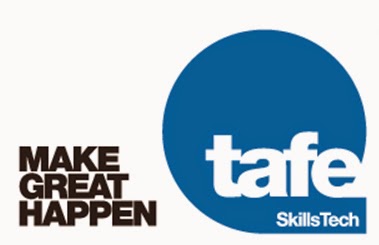So why the oil is prices so low?
In the last few weeks OPEC’s (Organization of Petroleum Exporting Countries) 13 members, (Algeria, Angola, Venezuela, Indonesia, Iran, Iraq, Qatar, Kuwait, Libya, Nigeria, the UAE, Saudi Arabia and Ecuador) have had discussions about the curbing oil output. However, those discussions failed to produce a plan to ‘cut oil production’ in a move viewed by many analyst's as an attempt to squeeze the booming U.S. shale oil sector — which has higher production costs than OPEC nations. Analysts are also saying production would need to be reduced by at least 1 million barrels per day (bdp) to steam this current oil over supply.So, the reason for the happy motorists is not good will at Christmas time by oil producers, but moreover a ‘glut of crude oil’ on the market, putting downward pressure in global oil prices. This is good right? Well not really, because historically LNG prices were intrinsically linked to oil prices because LNG usually displaced oil as a fuel source.
Resources analyst Peter Strachan is quoted as saying “about a 16% of the price of a barrel of oil gives you the price of a gigajoule of gas”. “So, if the price of oil is $100 a barrel, then gas is about $15.50 to $16 a gigajoule. Now that we're seeing oil prices down towards $50 to $54 a barrel, LNG prices are around $8.00 to $8.64 a gigajoule on contract, and spot prices might even be lower.
See the Problem?
At $8 to $9 a gigajoule, two major activities will probably eventuate:- There is not enough ‘margin’ to service the proponents debts from ‘CapX’ infrastructure expenditure and proponents will need to borrow more from the banks, extend loan repayment terms or seek additional reinvestment;
- For that price, resource companies will probably leave more CSG in the ground or stockpile it.
On top of this, the Aussie dollars has fallen to approximately 81.1 US cents, the lowest it has been against the US dollar since mid-2010. Kochie would say, “the less our dollar is worth against the US, the cheaper our exports are to foreigners and more expensive imports are to locals” (2). The cheaper our exports, the less money we get for those goods we send overseas – meaning LNG.
The Sydney Moring Herald recently warned, “that lower global oil prices could be harmful to future income from Australia's liquefied natural gas (LNG) projects”, which have previously been cited by Westpac as a source of support for the Australian dollar as the ‘iron ore prices continue to slump’. So if our LNG exports are worth less now and the LNG income was part of the solution for a stronger Australian dollar – well let’s just say CSG/LNG proponents, Banks and Canberra will be getting a little nervous.
What has been the reaction of industry?
SANTOS recently reduced planned spending by $700 million and is considering following QGC lead and selling off fixed asset sales and slashing its interest in the controversial NSW Narrabri coal-seam gas project. Oil volatility has impacted SANTOS shares with a 52% hit and as a result the company secured a three-year, $1 billion bilateral bank loan facility from ANZ to provide a buffer for the current uncertain oil price environment. The SANTOS interest in the PNG and GLNG projects are on track and are expected to produce positive cash flow in 2015/16 and this is expected to bolster share prices.The QCLNG LNG exports are on target for the first LNG loading at Christmas 2014. In fact a 283m LNG tanker the ‘Methane Rita Andrea’ is currently moored off Gladstone harbour awaiting regulatory procedures and clearance from the Gladstone Port Corporation. The Methane Rita Andrea’ is reported to be delivering its first LNG cargo to Singapore. To see pictures and track the tanker Methane Rita Andrea goto: The Methane Rita Andrea
QGC will also be reducing casual-contract staffing levels in the New Year as part of its shift from construction phase to steady state operations. BG Group is also confident in 2015. In a shrewd move BG Group has agreed to sell its Australian pipeline asset to APA Group for estimated US$5 billion. The Group expects the sale proceeds will be used to reduce net debt and to fund future growth investment.
APLNG partners (Origin 37.5%) ConocoPhillips (37.5%) and Sinopec (25%) have increased its loan facility to $7.4 billion and lengthening the repayment terms to place a buffer between itself and failing crude oil prices. The APLNG project is on track for a mid-2015 production and export of liquefied natural gas. In the current climate expenses are being reined in with slowing or stockpiling of gas supplies to insulate APLNG from the current oil prices ready for anticipated price rise in coming years.
The oil price reduction is not all bad. Companies with airline and transport interests will get a welcome boost to their bottom line from lower fuel costs.
As a side note:
Russia is not currently part of OPEC. OPEC members have around 67% proven oil reserves and are responsible for 42% of the global oil output. Russia is a large producer responsible for about 12% of (world) global production or about the same size as OPEC member Saudi Arabia. OPEC is currently courting Russia to join. If they do, OPEC will have control over 50% of Global oil output and over 75% of global oil reserves.(3)http://www.cmegroup.com/trading/energy/natural-gas/natural-gas.html
https://au.smallbusiness.yahoo.com/money/a/-/13706415/what-does-a-falling-aussie-dollar-mean-for-small-business/
http://windowstorussia.com/russia-why-is-she-not-part-of-opec_25.html
Oil Prices predictions




























